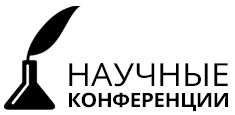The main direction of an article is the discourse and types of discourse. The main considerable question is the discourse analysis or discourse studies which is a general term for a number of approaches to analyzing written, spoken or signed language use. Discourse analysis is the branch of linguistics that deals with the study and application of approaches to analyze written, spoken or signed language. Since its introduction to modern science the term 'discourse' has taken various, sometimes very broad, meanings. In order to specify which of the numerous senses is analyzed in the following dissertation it has to be defined. Originally the word 'discourse' comes from Latin 'discursus' which denoted 'conversation, speech'. The objects of discourse analysis—discourse, writing, talk, conversation, communicative event, etc.—are variously defined in terms of coherent sequences of sentences, propositions, speech acts or turns-at-talk. Contrary to much of traditional linguistics, discourse analysts not only study language use 'beyond the sentence boundary', but also prefer to analyze 'naturally occurring' language use, and not invented examples. This is known as corpus linguistics; text linguistics is related. Discourse analysis has been taken up in a variety of social science disciplines, including linguistics, sociology, anthropology, social work, cognitive psychology, social psychology, international relations, human geography, communication studies and translation studies, each of which is subject to its own assumptions, dimensions of analysis, and methodologies. The term discourse analysis (DA) first came into general use following the publication of a series of papers by Zellig Harris beginning in 1952 and reporting on work from which he developed transformational grammar in the late 1930s [1]. Formal equivalence relations among the sentences of a coherent discourse are made explicit by using sentence transformations to put the text in a canonical form. Words and sentences with equivalent information then appear in the same column of an array. This work progressed over the next four decades into a science of sublanguage analysis [2], culminating in a demonstration of the informational structures in texts of a sublanguage of science, that of immunology, [3], and a fully articulated theory of linguistic informational content [4]. During this time, however, most linguists pursued a succession of elaborate theories of sentence-level syntax and semantics. Although Harris had mentioned the analysis of whole discourses, he had not worked out a comprehensive model, as of January, 1952.Harris's methodology was developed into a system for the computer-aided analysis of natural language by a team led by Naomi Sager at NYU, which has been applied to a number of sublanguage domains, most notably to medical informatics. In the late 1960s and 1970s, and without reference to this prior work, a variety of other approaches to a new cross-discipline of DA began to develop in most of the humanities and social sciences concurrently with, and related to, other disciplines, such as semiotics, psycholinguistics, sociolinguistics, and pragmatics. Many of these approaches, especially those influenced by the social sciences, favor a more dynamic study of oral talk-in-interaction. Nowadays, there are some types of discourse according to the genre and its conceptual strategy of literary discourse.
30–31 января, 2014
